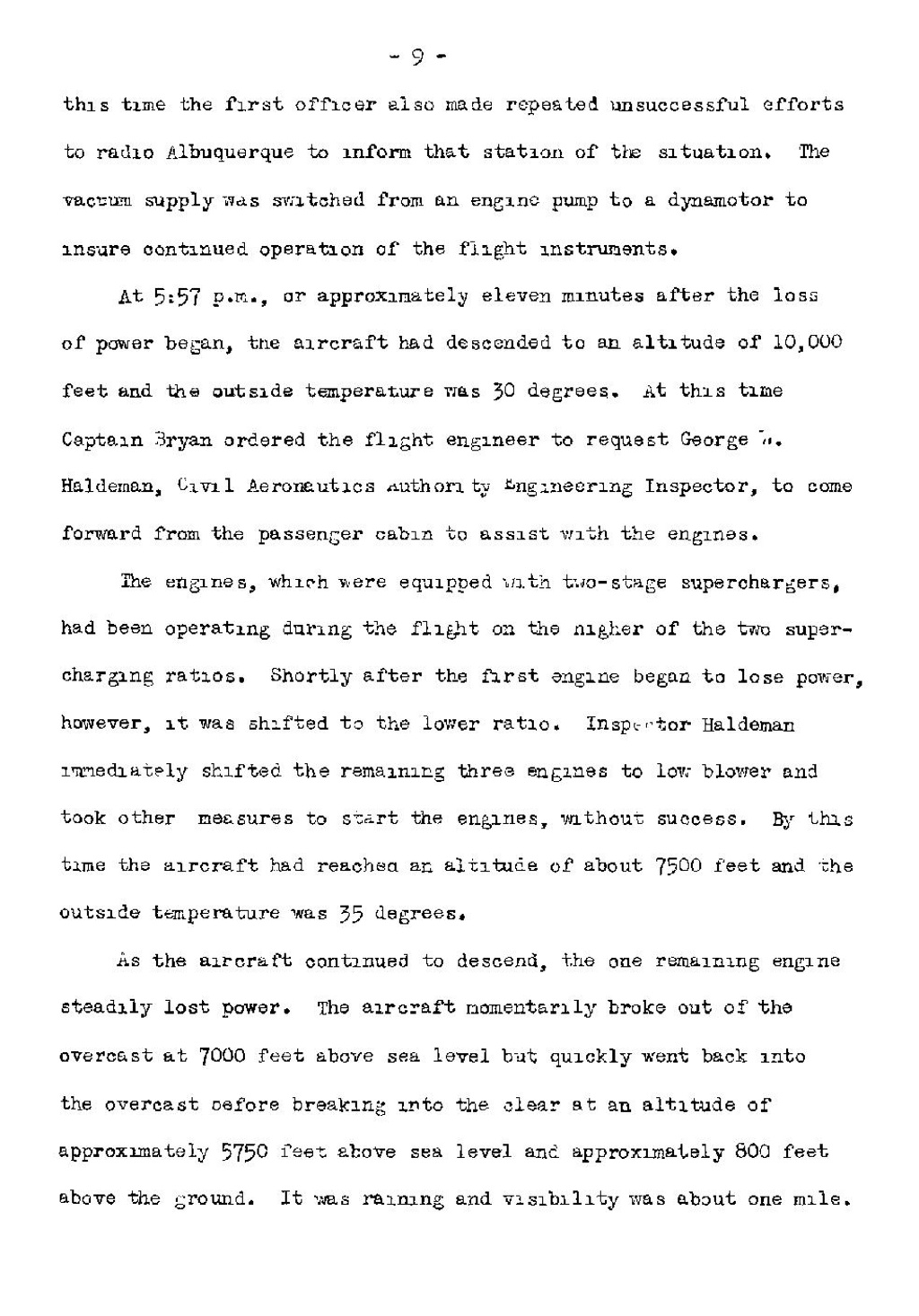- 9 -
this time the first officer also made repeated unsuccessful efforts to radio Albuquerque to inform that station of the situation. The vaccuum supply was switched from an engine pump to a dynamotor to insure continued operation of the flight instruments.
At 5:57 p.m., or approximately eleven minutes after the loss of power began, the aircraft had descended to an altitude of 10,000 feet and the outside temperature was 30 degrees. At this time Captain Bryan ordered the flight engineer to request George W. Haldeman, Civil Aeronautics Authority Engineering Inspector, to come forward from the passenger cabin to assist with the engines.
The engines, which were equipped with two-stage superchargers, had been operating during the flight on the higher of the two supercharging ratios. Shortly after the first engine began to lose power, however, it was shifted to the lower ratio. Inspector Haldeman immediately shifted the remaining three engines to low blower and took other measures to start the engines, without success. By this time the aircraft had reached an altitude of about 7500 feet and the outside temperature was 35 degrees.
As the aircraft continued to descend, the one remaining engine steadily lost power. The aircraft momentarily broke out of the overcast at 7000 feet above sea level but quickly went back into the overcast before breaking into the clear at an altitude of approximately 5750 feet above sea level and approximately 800 feet above the ground. It was raining and visibility was about one mile.
